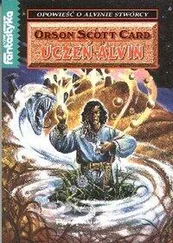Ever since Jim and his wingmen first dueled with and damaged three torpedo boats on August 2, President Lyndon Johnson saw conflict in the Gulf of Tonkin as an excuse to escalate U.S. involvement in Vietnam. Even as uncertain and conflicting accounts of what had transpired two nights later arrived in Washington, President Johnson and Secretary of Defense Robert McNamara decided to retaliate for what they considered two North Vietnamese provocations: one on August 2 and one on August 4. In their living rooms, thirteen hours after the second incident, Americans watched their president condemn the attacks and announce the nation’s response. “[America’s] reply,” he said, “is being given as I speak to you tonight. Air action is now in execution against gunboats and certain supporting facilities in North Vietnam which have been used in these hostile operations.”
As Johnson spoke, viewers could envision a deluge of bombs avenging the two reported attacks, when in fact the bombs had yet to fall. Jim Stockdale had been rousted out of his bunk only several hours earlier, as August 5 dawned on the waters off Vietnam, to lead the first wave of aircraft off Ticonderoga; the planes had launched less than an hour before Johnson’s speech. In a move that foreshadowed the disconnect that would persist between battlefield pilots and Washington strategists throughout the coming war, President Johnson announced the attacks before bombs had been dropped. His words helped alert the North Vietnamese to the American warplanes that were at that moment approaching their coastline, led by the skeptical yet duty-bound aviator who’d been involved in both Gulf of Tonkin incidents.
In the years following, the government never ascertained exactly what transpired on the Gulf of Tonkin that night of August 4, when the supposed second attack took place. For his part, Jim Stockdale maintained that he’d seen nothing but “black sea and American firepower.” Given the twenty-year collision course charted by Washington and Hanoi, however, if the August incident had not escalated the conflict, another incident almost certainly would have. Regardless, President Johnson used the episode to pass the Joint Resolution on Southeast Asia—widely known as the Gulf of Tonkin Resolution—on August 7. The resolution, which passed unanimously in the U.S. House and almost so in the Senate, authorized the president to send combat forces into Vietnam without a declaration of war.
The Gulf of Tonkin Resolution and the military escalation that followed led the United States into a long war—one never officially declared—that would drastically affect millions of Vietnamese and American lives. It was a war that would leave Jim Stockdale and hundreds of other U.S. servicemen languishing in North Vietnamese prisons, some without their families’ knowledge, while their country became ensnared in a long, costly conflict originally meant to end in quick victory.
2
WELCOME TO THE HANOI HILTON
On December 7, 1964, Lieutenant Commander Bob Shumaker thundered westward across the California coastline in his F-8 Crusader, the sun rising at his back. Spread throughout the clear sky around him was Fighter Squadron 154—the Black Knights—and beyond them the rest of the USS Coral Sea ’s air wing. With a thrill of excitement, these aviators winged over blue waters toward a Western Pacific deployment. Thirty miles offshore, the aircraft converged on the carrier, their home for the next seven months. Bob flew along the carrier’s starboard side, then peeled off into the landing pattern. Once the ship’s arresting wires trapped his Crusader, he stepped out of his cockpit and onto the flight deck, rejoining the brotherhood of men at sea. For the next several months, he would spend most of each day within 100 yards of his fellow aviators. He and his squadron mates would become inseparable, sharing a ready room, staterooms, heads, and wardroom dining tables. He would miss home, as would they all, but at sea he did his job, he served his country. Bob would choose no other life, no other company. His education and smarts rivaled those of any Ivy League graduate or Wall Street financier, men who could see their families each night, who possessed considerably more substantial means, and whose chances of dying on the job hovered around nil. In the navy, though, Bob had found a code by which to live. He and his shipmates heard a call to duty and they answered, volunteering despite the risks and hardships of aviation. They also craved the rush of adrenaline the way their white-collar counterparts needed their morning coffee. Thus drawn by the adventure of the open sea and sky, the Coral Sea ’s fraternity of aviators willed the great ship westward into sunset after sunset, toward the test they all sought, in the air against the enemy.
After he landed his Crusader on the deck that December morning, Bob walked below and settled himself into his small, shared stateroom. He laid his light 5′10″ frame on the narrow bunk and contemplated the wife and newborn son he’d left in San Diego. He’d married Lorraine Shaw less than a year before. At twenty-nine and with subtle freckles, he’d looked nearly as young as the twenty-one-year-old Canadian schoolteacher he’d met on her first trip to California, less than two years earlier. Their cross-continent romance budded so quickly and quietly that when Lorraine told her mother that she planned to get married, Rose Shaw had asked, “To whom?”
Lorraine began her service as a navy wife in Monterey, California, in January 1964, while her new husband finished his master’s degree in aero-electronics at the Naval Postgraduate School. The scientific discipline suited Bob Shumaker perfectly. The numbers, formulas, and logarithms of the world simply lined up clearly in the mind of the bright-eyed, soft-spoken Pennsylvanian. He solved complex equations like a high schooler handling simple addition; he’d graduated eighth out of 681 in the Naval Academy Class of 1956. By the time he earned his diploma and received his officer’s commission, his classmates and nearly everyone else called him Shu. Six years later, the same summer he met Lorraine, NASA selected the distinguished graduate for the Apollo astronaut pipeline. He made the cuts from the original list of nine thousand applicants to the thirty-four finalists. Then doctors uncovered some enlarged nodes in his chest, remnants of a long-ago bout with mononucleosis. Shu considered it inconsequential; NASA’s physicians did not.
Disappointed but not discouraged, Shu returned to Monterey and earned his master’s degree in June 1964. Then he received orders for NAS Miramar, so Shu and Lorraine packed their scant belongings and drove down the California coast via U.S. Route 1. Once they’d settled in San Diego, Lorraine gave birth to Grant Shumaker on November 13, 1964—three months after the August Gulf of Tonkin incident had escalated America’s involvement in Southeast Asia. At the birth of his first son, Shu felt the excitement of fatherhood along with the responsibility of raising a child he considered a gift from above. He deployed aboard the Coral Sea just one month later.
On that last morning together, Lorraine and infant Grant had driven him to the hangar of Fighter Squadron 154. When they arrived, Shu had quickly exited the car; he’d told Lorraine a long good-bye would be too difficult. The car door closed with a metallic thud, and Shu walked off toward his duty. Lorraine and Grant suddenly found themselves alone in an unfamiliar city. At age twenty-two, Lorraine began her first real tour as a navy wife. Hers would last longer than that of any other wife in U.S. Navy history.
Since the August 5, 1964, raid led by Jim Stockdale, America’s carrier air forces had stayed out of North Vietnam. President Johnson had promised his constituents, “We are not about to send American boys 9,000 or 10,000 miles away from home to do what Asian boys ought to be doing for themselves.” Yet by 1965 more than 20,000 U.S. soldiers were serving in South Vietnam as “military advisers”—troops technically designated for training or support, not combat. On February 7, Communist guerrillas killed eight of these American advisers and wounded more than one hundred during an attack on the U.S. base at Camp Holloway, deep in the interior of South Vietnam. President Johnson found himself caught between the fear of this conflict escalating into outright war and provoking North Vietnam’s Chinese and Soviet allies on the one hand, and the fear of hawkish opponents impugning his anti-Communist commitment on the other. Embarking on a middle course of gradual escalation that would mark his prosecution of the war, Johnson immediately ordered U.S. forces to execute Operation Flaming Dart, a very limited reprisal against North Vietnam, which he viewed as sponsoring the attacks. Undeterred by Flaming Dart, the guerrillas bombed U.S. barracks in Quy Nhơn three days later, killing twenty-three military personnel. Johnson responded with a larger operation, Flaming Dart II, which commenced on February 11.
Читать дальше












